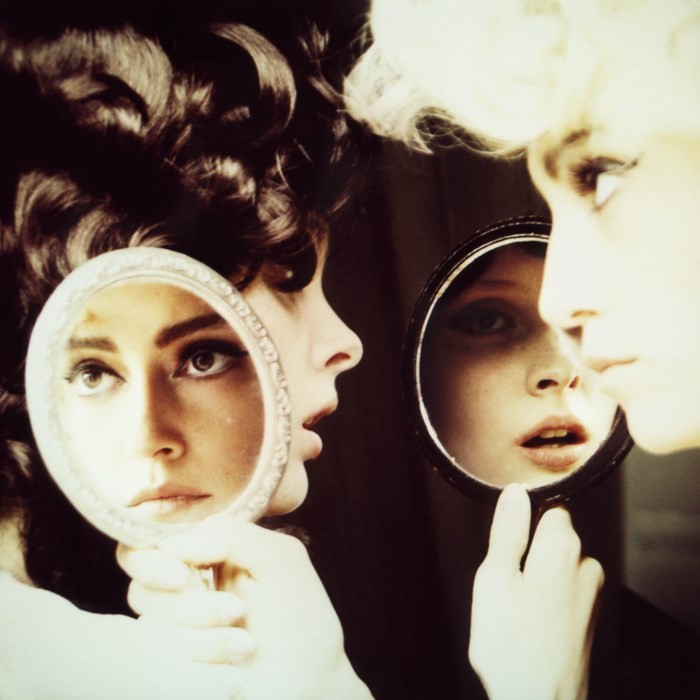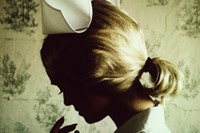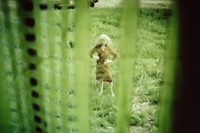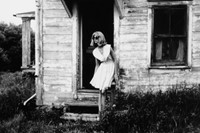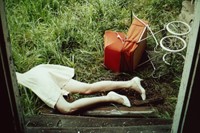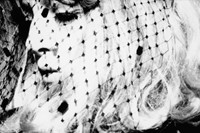We speak to artist Marianna Rothen as an exhibition of her sinister and seductive photographs opens in New York
Beauty isn’t easy in Marianna Rothen’s photographs. Her femme fatales might be as seductive as silver screen sirens, but their worlds also seem to be unravelling. In her latest body of work, Shadows in Paradise – now released both as a publication, and on view as an exhibition at Steven Kasher Gallery, New York – her women are on the verge, in staged scenes that are charged with suspended drama: they smoke, drink, languidly hold lethal weapons, stare wistfully at their own reflections in the mirror. It’s up to us to complete their stories, or to create a dialogue between them.
The explosive combination of the fraught psychological tension combined with alluring, dangerous beauty of Rothen’s protagonists is inspired in part by the women of Film Noir. Barbara Payton’s character in the 1950 film adaptation of the novel Kiss Tomorrow Goodbye provides a key reference. “I had just read the re-released book, I Am Not Ashamed, in which the rise and demise of Barbara’s life is sassily and unabashedly stated, supposedly through her own words,” the artist explains. “I was so moved by the strength of her failure and found her to be a perfect ‘shadow in paradise’. She represents the fine line between having it all and losing everything.”
Rothen – who worked as a model as a teenager – also appears in front of her own lens. Stepping out of her own shadow and getting behind the camera as a photographer has given her the freedom to explore different personae; her self-portraits are, in a way, performances of her own personal desires and fears. She shared them with AnOther, and other reflections on style, beauty and her nostalgic aesthetic.
On creating a nostalgic aesthetic…
“Growing up, I remember spending whole days going through my mom’s picture books of Marilyn Monroe and Princess Diana. On Sundays we would sit down as a family and watch the big Hollywood classics. Audrey Hepburn and Elizabeth Taylor, whether I liked them or not at the time, were my first representations of what I thought successful women were. As a child the dream was to become a princess and live in LA. In my upcoming exhibition I will also show a two channel video, The Woman With a Crown, which is a commentary on that disillusion of fame.”
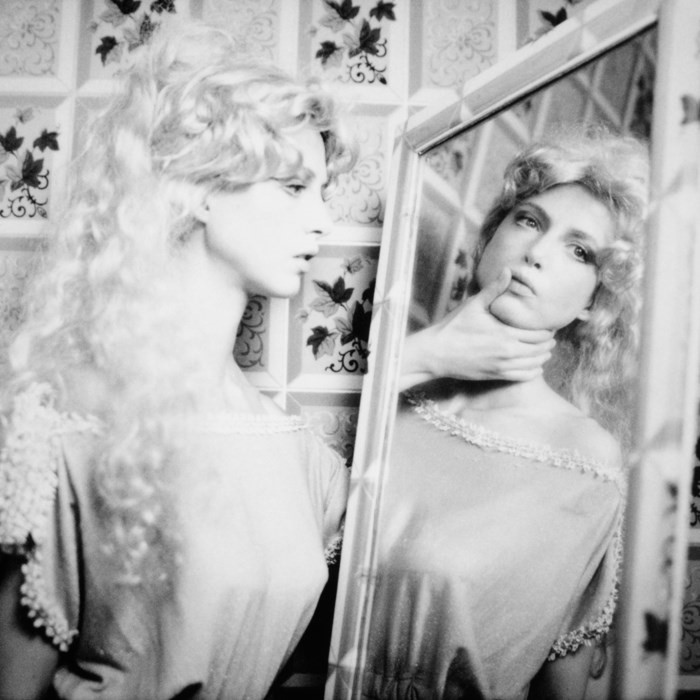
On the influence of cinema on her new work...
“Shadows in Paradise is loosely based on the ideas and similarities of three films, Ingmar Bergman’s Persona, Robert Altman’s Three Women and David Lynch’s Mullholland Drive. I began photographing this project just after my boyfriend and I got our house in the countryside of upstate New York. The house had been vacant for almost ten years and was in disrepair. I spent many months up there alone, trying to bring it back to life while simultaneously preparing it as a set for my photographs. Since this work is half self portraits, I was looking for ways to break my character into many. I wanted it to be a narrative between the selves, the externalising of one’s multiple personalities. These three films spoke to me particularly because they deal with women in isolation. They feature two or three characters who either trade places with one another, meld together to form one or shift in and out of each other’s shadows. The other half of the series is photographs of friends and colleagues, people who I have known for a long time and people who are also working as photographers in a similar way to me. We inspire each other and our work and identities weave a close path together.”
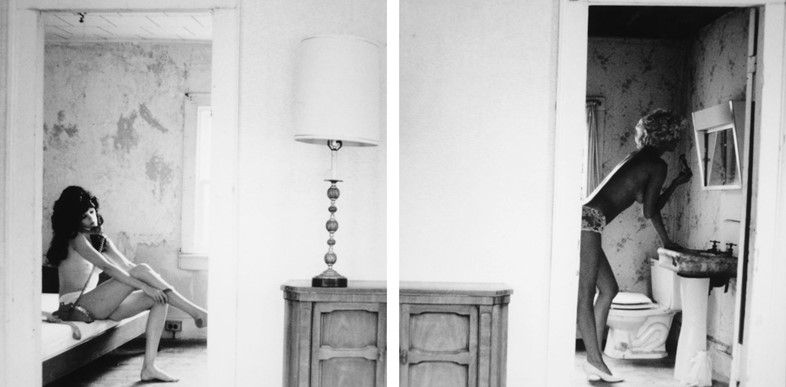
On the ultimate femme fatale...
“The femme fatale to me has always been some kind of supernatural force. She’s the voice in the back of your head, the hunter and the haunter and if you succumb, fools you into making decisions for her benefit. Her act is a seduction. Here, she is the one playing tricks, ghosting in and out of reflections. I like to think each character has her own femme fatale.”
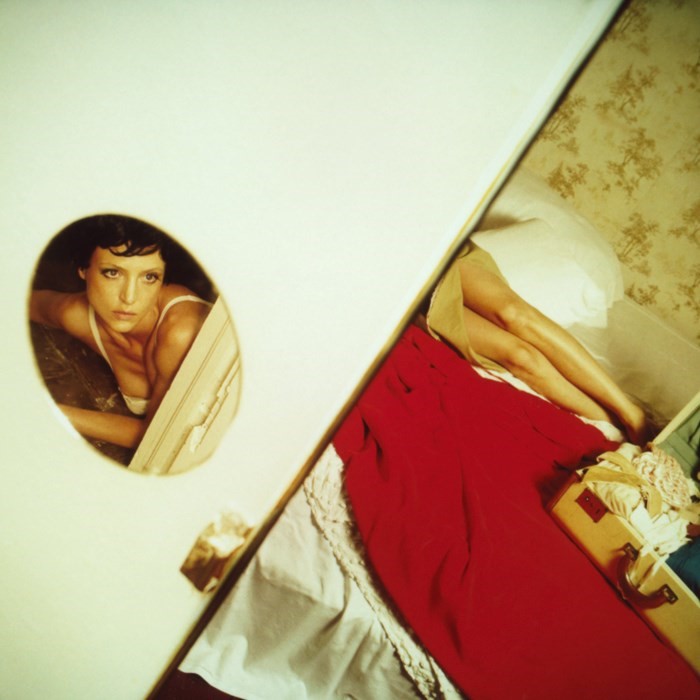
On the narrative of Shadows in Paradise...
“The main story here is about isolation. The impossible idea of paradise. I always had a fantasy of creating a place I could go, just in case. Where things seem alright, life is simple and maybe I can grow some vegetables. It is hard to keep that illusion alive. Most people need a dialogue beyond self-creation, something that gives back to them. There is also a need for drama and confrontation, if there is no one around you will surely have it with yourself. In the previous series Snow and Rose & Other Tales the women found a refuge from their lives. In this series that perfect view is splintering. Their happiness is fleeting and reminders of the outside world are slowly seeping in. This is shown through the books they read, the photographs on the wall, pregnancies etc.”
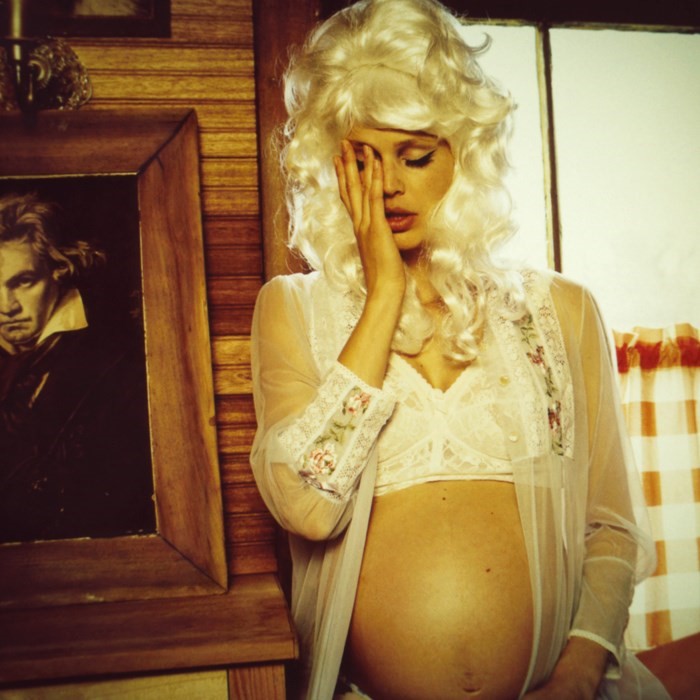
On some of the characters who appear in the series…
“Mrs. Dubinbaum was actually a woman who lived in the house during the 1930s to 1960s. She was an artist and left her portfolio behind. She was also responsible for the vast and worldly library of books as well as dance costumes and anything else creative I found. I grew to have such a fond idea of her. There is a painting which is her self portrait in the photograph Mrs. Dubinbaum that I found slashed in the house. Betty and Veronica is a nickname I use for best friends. The light and the dark, the yin and yang aspects. It is a competition even though they deeply care for one another. This chapter and its photos are the most reminiscent of the film Persona. Zig-Zag Girl is towards the end of the story. It shows her seemingly cut in two though she is still whole. It uncovers the illusion of her multiplicity.”

On depicting female beauty…
“My images try to invite the viewer to look beyond beauty. This reminds me again of the femme fatale. Her beauty might be blinding. But if you can see past there is another level of meanings and questions. When women photograph women it is about creating something they identify with and want to be. On some occasions it is not obvious whether a man or woman took the photograph. If this is the case for the female photographer, it is really about her owning her image and for that I find it powerful.”
Marianna Rothen: Shadows In Paradise is showing at Steven Kasher Gallery, New York from February 23 – April 15, 2017.
